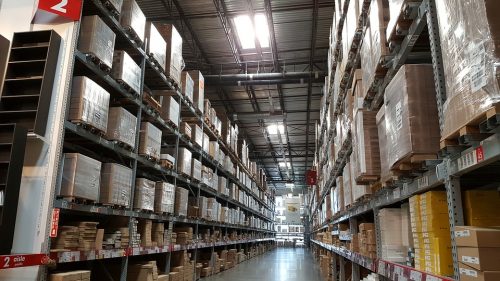The Future of Warehouse Jobs

Managers and warehouse workers use mobile devices to connect to an Inventory Management System. Using this system allows the managers to add and remove inventory accurately and efficiently. The system also connects to mobile devices used by warehouse workers to scan products using an RF scanner. The worker scans the item and marks it for delivery, adds it to inventory, and even marks its location in the warehouse. Locations of items can be viewed in the Labor Management System on mobile devices and workstations. These devices are connected, over Wi-Fi, to the systems each member of the warehouse needs to carry out daily operations. Being connected and in constant communication creates synergy among the staff. That synergy is created by adopting and applying a Labor Management System.
Labor Management
Labor Management Systems are used to effectively and efficiently allocate labor resources based on the amount of revenue made during that period and the amount of work required. Resource management is a key element that makes warehouse jobs easier and more enjoyable. Resources can be used more effectively with the right information. The correct data in the palm of the production manager’s hand can increase productivity of the facility and its workers. Facility employees work directly with equipment and machinery to execute tasks provided by the production managers. Production managers operate, repair, and maintain machines effortlessly.
Product Measuring, Lifting & Wrapping
Machines are working side by side with warehouse workers. Robots are essential to wrapping, stacking, and picking products. These tasks are working in unison with warehouse workers to ease the load of lifting heavy products and time saving. The extra time saved can then be utilized on troubleshooting machinery and performing preventative maintenance. Regularly performed maintenance increases the time between purchasing new parts and equipment. Warehouse production managers will see their tasks clearly and will have the information they need to support them. Support and structure contribute to the overall goal of customer satisfaction and quality feedback.
Customer Ordering
Customers can now receive and process orders in real-time. This is accomplished by utilizing an online ordering portal. Portals give companies a large amount of flexibility to accommodate labor and get the product(s) delivered in an expedited fashion. Products are being located, measured, wrapped, boxed, and shipped at a record pace that brings life to same day delivery. Customers are notified via the portal of their delivery and request customer feedback in a timely manner. These processes perpetuate the idea that working in a warehouse can be interesting and stress free.
Technology is an integral part of our everyday lives and transforms the way we work. Warehouse work is no exception. New warehouse technology allows warehouse jobs to be more enjoyable, satisfying, and connected. Connecting warehouse jobs and customers to increase customer feedback is what is now necessary in 2018. Adoption of these technologies allow warehouse workers to become more valuable in the modern job market. Learning how to grow with these systems and processes open doors for future opportunities.
Customers are seeing more money in their pocket in 2018. Technology and quality work are the driving factors. Keeping things moving and adapting to these technologies and systems makes any warehouse worker more valuable in today’s job market.
